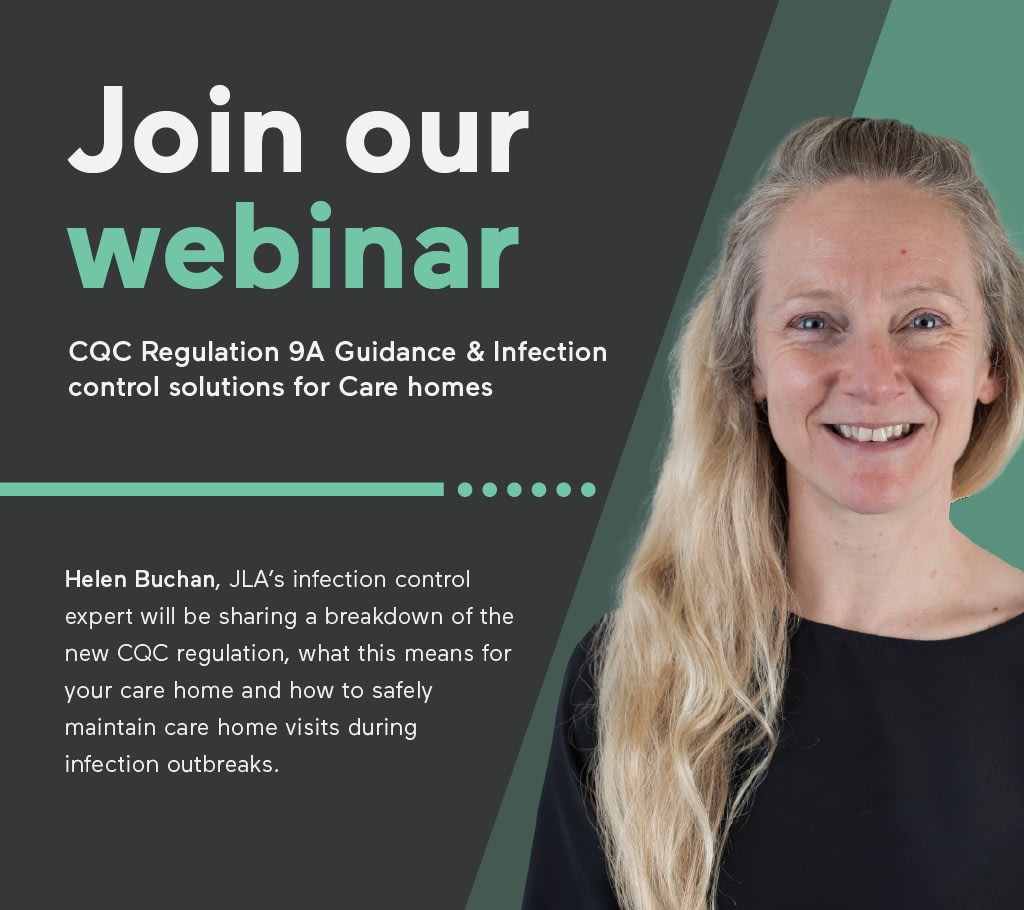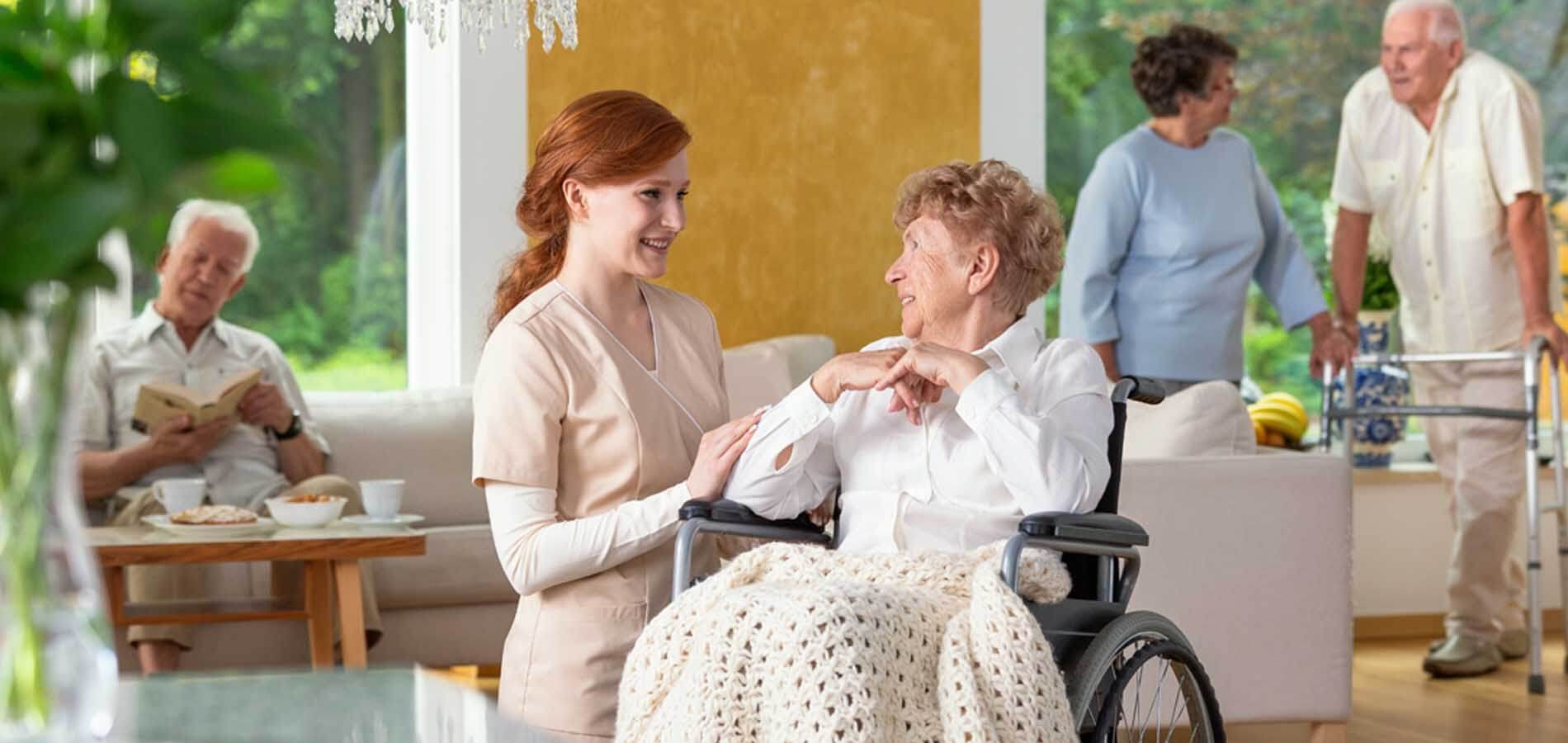A focused approach to infection control in care homes is key to keeping residents and staff safe, well and happy. Outbreaks of diseases such as norovirus, MRSA, E.coli and salmonella can be unpleasant for all concerned and, for the most vulnerable, life-threatening.
A daunting pool of detailed regulations, protocols, guidelines and reports exists which can be confusing for owners, managers and nursing professionals who want to implement, review and enhance health and hygiene procedures. Here’s an introduction to some of the main areas you should focus on – for more advice please contact our team for a review of your current processes.
Need help with infection control in your care home? Download your FREE best practice infographic>>
Why is infection control important in care homes?
Whether you’re still mulling over the blueprint for a new home or have been running one for decades, infection control is arguably the most important thing to get right and stay on top of. In order to meet residents’ expectations – and of course bear up to the scrutiny of CQC inspections – following best practice procedures and constantly reviewing performance is critical if you are to maximise the prevention and control of infections to keep care home residents out of harm’s way.
An infection outbreak can be defined as:
- Two or more people with the same infection caused by the same organism who probably acquired the organism in the same place
- More people than you would expect with the same infection.
7 Infection Control Tips Every Business Should Be Following right Now >>
While prevention is indeed better than a cure, the realities of communal living present a significant challenge – and so diligence in stopping outbreaks before they occur is of huge importance. A care home by its very nature will always be susceptible to contagious diseases such as norovirus, salmonella, C.diff, E.Coli and MRSA. And just as in hospitals where a number of patients share wards, communal living in homes for the elderly or vulnerable will always carry the risk of bacterial, viral or fungal outbreak.
In any shared living space such as care homes, there are also shared infectious agents – usually bacteria or viruses – that from time to time cause infection outbreaks (Utsumi et al, 2010; Strausbaugh et al, 2003)
How can you prevent the spread of infection in a care home?
While the Department of Health provides 10 criteria that care home providers should be assessed against by the Care Quality Commission (CQC) and Environmental Health Officers (EHO’s) advising local authorities, here are the main areas where we believe the biggest wins can be achieved in your care home – specifically in your laundry and cleaning processes.
1. Hand hygiene
According to the World Health Organisation (WHO) , there are five important ‘hand hygiene moments’ for care home workers:
- Just before you provide care to a resident
- As soon as you have finished providing care to a resident
- Straight after you have been exposed to any body fluids
- Straight after touching the person’s surroundings (e.g. chair, door handle)
- As soon as you take off protective gloves
Keeping arms bare below the elbow, removing wrist and hand jewelry, maintaining short, clean fingernails without nail polish or false nails and covering cuts or grazes with a waterproof dressing are all further steps advised by NICE to help staff practice good standards of hand care for infection prevention – and limiting cross-contamination if an outbreak does occur.
2. Personal protective equipment
The WHO goes on to encourage the use of gloves and aprons for personal protection amongst all care home staff. It’s important to wear each item only once, and if gloves are needed as you provide care, put them on just before providing care and take them off straight afterwards – then dispose of them correctly.
3. Safe management of linen
Linen management requirements not only help prevent outbreaks of infections, but are often directly related to regulatory standards, which means professional advice is always needed when pursuing on-premise laundry best practice.
Read Our Laundry Infection Control Advice >>
Safe washing of linen and laundry is paramount for effective infection control in any care setting. Here’s a quick overview of how to achieve it according to the Department of Health:
- Correct handling of laundry to prevent spread of infection
- Appropriate decontamination of all care home laundry
- Laundered items to be stored in a clean area, above floor level
- Laundry area should be designed to minimise recontamination with procedural segregation
- Manual sluicing should be avoided under all circumstances
One of the requirements in the Department of Health’s Health Technical Memorandum for the Decontamination of Linen For Health and Social Care – HTM 01-04 – is to wash linen at ‘65 degrees for 10 minutes, or 71 degrees for 3 minutes when thermal disinfection is used. This, considering difficulties in maintaining a long-serving nursing team with deep understanding of the regulations, is difficult for homes to accurately monitor and log to verify that disinfection has taken place during each wash cycle.
Please note that HTM 01-04 replaced Cfpp 01-04 in 2016.
HTM 01-04 – Disinfection by heat (5.50) states:
The washing process should have a disinfection cycle in which the temperature of the load is either maintained at 65ºC for not less than ten minutes or 71ºC for not less than three minutes when thermal disinfection is used. Alternative time– temperature relationships may be used as long as the efficacy of the process chosen is equal to or exceeds that of the 65º or 71ºC processes. With all these options, mixing time should be added to ensure heat penetration and assure disinfection. For conventionally-designed machines and those with a low degree of loading (less than 0.056 kg/L), four minutes should be added to these times to allow for adequate mixing time. For a heavy degree of loading (that is, above 0.056 kg/L), it is necessary to add eight minutes.
Outlining your approach to the DoH’s code will not only ensure best practice in key areas of infection control in your care home, but also give you a marketable credentials that will reassure residents and their families that your home is health-focused and committed to high standards.
For all textiles, including heat-sensitive fabrics, amore effective method of disinfection is OTEX ozone laundry. Using a natural gas (and energy efficient lower temperatures that will reduce your bills) to eradicate micro-organisms in a wash, rather than the high temperature process outlined above, OTEX Ozone Disinfection system will protect residents by reducing the threat of cross-infection, and even provide staff with a print-out of the wash process for real time verification that will help meet HTM 01-04 compliance requirements.
Find out how OTEX Ozone Disinfection can help infection control in care homes
4. Waste disposal
Healthcare waste, such as dressings and disposable clothing, can spread infection. To reduce the risk of this, NICE advice is to put waste immediately into the right colour storage, bag or container. It’s also key to make sure your senior leaders, general staff, residents and their loved ones all know how healthcare waste must be labelled, handled, stored and disposed of with clear signage and instructions in care home literature.
5. Management of care equipment
Sluice room waste management is also key to the overall success of infection control in care homes. But if you opt to re-use equipment such as bedpans and commodes, the Royal College of Nursing’s guidelines are a good place to start when it comes to decontamination.
Reusable, multi-patient use equipment such as commodes, beds, pressure relieving mattresses and blood pressure cuffs, requires decontamination after each episode of use by a patient.
As part of the RCN’s ‘Essential Practice for Infection Prevention and Control’ overview, decontamination is highlighted as a combination of processes – cleaning, disinfection and/or sterilisation – that are used to ensure a reusable medical device or patient equipment is safe for further use. Facilities for cleaning these items should also be separate to your laundry area, and take into account the number of floors you have as well as your building’s layout.
6. Food hygiene regulations
There are a number of things to consider when it comes to maintaining high standards of infection control in relation to food hygiene in your care home – including the Food Safety Act, dishwashing, HACCP guidelines, storage and preparation and CQC inspection ratings.
Along with laundry and disinfection, you should always seek expert advice for a dedicated commercial catering process that includes the right equipment, the right layouts and the right plans for staff to follow.
Contact us for Infection Control Advice >>
CQC Regulation 9A webinar for care homes




